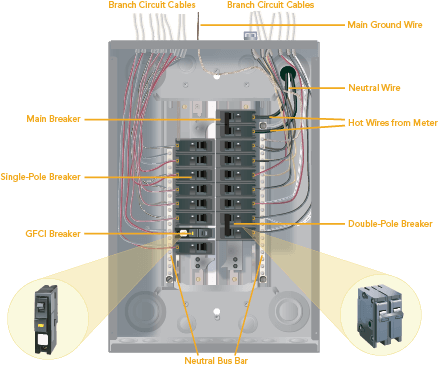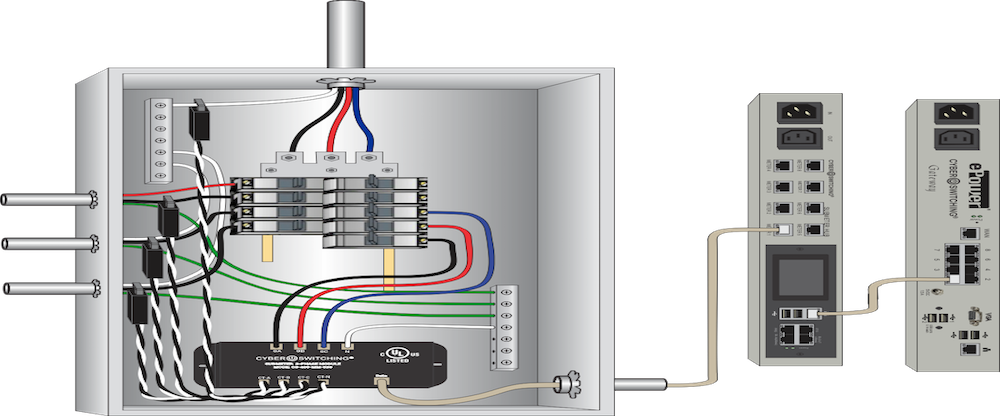News
What is an electrical panel?

An electrical panel (a.k.a. breaker panel) is a metal box with a door, usually built into a wall in an out-of-the-way corner of your home. Inside, you’ll find all your home’s breaker switches.
You can toggle breaker switches on and off. They’ll also shut off automatically when there’s too much electrical current running through them — that’s what they’re for.
Within the electrical panel, you’ll find a main circuit breaker that controls the power to the entire house. You’ll also see individual breakers, each responsible for providing the electricity to a specific part of your home. Each breaker should have a label that identifies the area of the house it controls.
Some older homes don’t have breakers; they have fuses instead. If you have a fuse box, you won’t see any switches on your electrical panel; you’ll see screw-in fuses. If your home still uses a fuse box, you may have difficulty getting insurance, or you may have to pay a higher rate. We’ll address fuses and home insurance further down the page.
The power to your home comes through an electrical meter outside, which routes power to your electrical panel. You can shut off this main feed of electricity using the main breaker in your electrical panel. Your main breaker also tells you the amperage of your electrical service (amperage is the strength of the electrical current).
Home electric services in Canada range from 60 to 400 amps. Most electrical codes mandate at least 100-amp service.
Home insurance providers are often interested in your home’s amperage. If it’s less than 100, you might need to update your system. Sub-100 amperage could make it difficult for you to find insurance for your home; at the very least, you’ll need to pay a higher rate.
HOW DO ELECTRICAL PANELS WORK?

An electrical panel box goes by several names, including breaker box, load center, breaker panel, and service panel. Regardless, the typical electrical panel for a home is a steel box that’s mounted on a wall in the garage, basement or laundry room. It contains multiple circuit breakers, usually in two columns, all of which are wired to the circuits that distribute electricity throughout the house.
There are many types of breaker boxes, and sometimes a house might need a particular panel that meets local codes or applications. However, check out below the most common types of electrical panel boxes and how they differ from each other.
Main Breaker Panels – as the name says, these have a main breaker that’s built-in and can be used to shut down electricity entirely. The main breaker has the ability to limit the amount of power coming from outside through a large two-pole circuit breaker, therefore protecting the circuits.
Lug Panels – these don’t have a main breaker, but an electrical connector, also called a lug, that all line wires run to. Because there’s no main breaker, this type of panel needs a separate disconnect, preferably at the meter, as this is usually outside the house.
Sub-Panels – these are smaller breaker boxes and typically service a particular area of the house. If you have a greenhouse or workshop for instance, or a big electricity user such as a hot tub and sauna, then a sub-panel that only services that are and that’s conveniently located nearby is a good thing to have.
Transfer Switches – these are sub-panels as well, and they’re used to transfer power from a portable generator (alternative power) into electrical power through the breaker box. These are especially useful in areas where storms are common.

